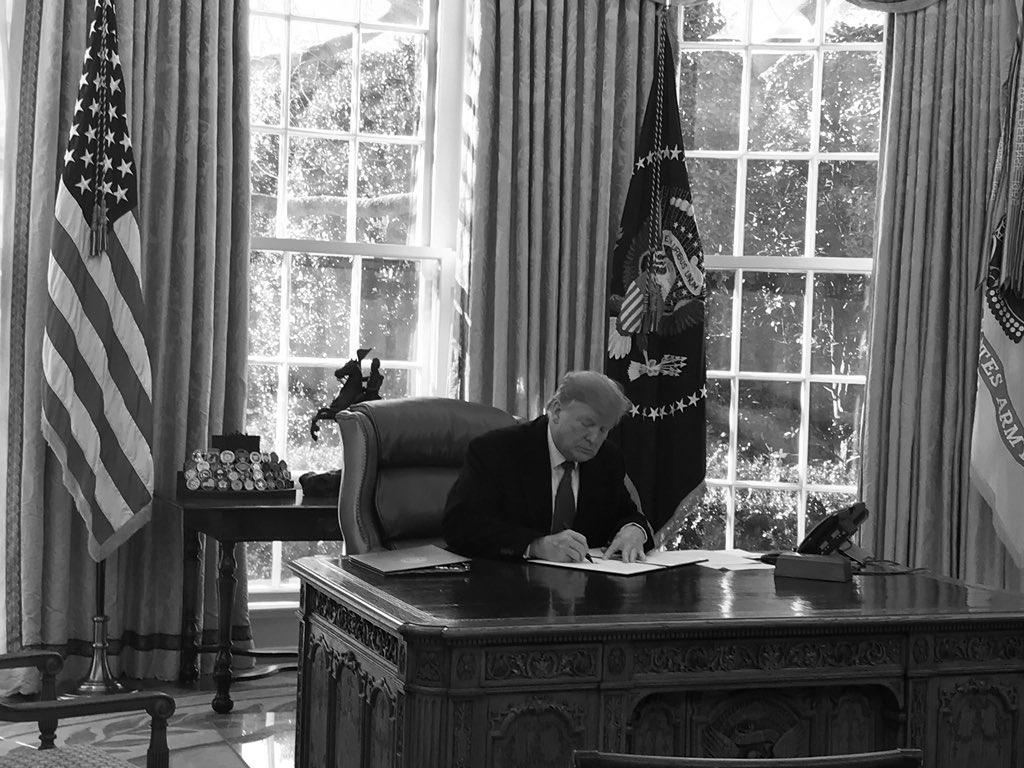The Supreme Court’s Contribution to the Confrontation Over Emergency Powers
Three significant questions behind President Trump’s declaration of a national emergency to build a border wall have a single, surprising answer: Why did Congress in the National Emergencies Act (NEA) of 1976 delegate such broad and vague power to the president to declare national emergencies? Why wasn’t Congress more specific in defining the circumstances that constitute a national emergency? And why are the courts now going to have the final word in determining whether the president has properly invoked or abused the power the NEA gives him?

Published by The Lawfare Institute
in Cooperation With

Three significant questions behind President Trump’s declaration of a national emergency to build a border wall have a single, surprising answer: Why did Congress in the National Emergencies Act (NEA) of 1976 delegate such broad and vague power to the president to declare national emergencies? Why wasn’t Congress more specific in defining the circumstances that constitute a national emergency? And why are the courts now going to have the final word in determining whether the president has properly invoked or abused the power the NEA gives him?
The answer to all these questions lies in a 1983 Supreme Court decision, INS v. Chadha. That decision, rightly or wrongly, decimated the policy scheme Congress had created for overseeing the president’s declaration of emergency powers—and nearly 200 other federal statutes in which Congress since the 1930s had created a similar scheme.
Here’s how the NEA was supposed to work. Enacted in the post-Watergate era, the NEA’s aim was part of Congress’s general effort in that era to rein in presidential power. In the NEA, Congress sought to reclaim greater congressional control over what had become the promiscuous presidential use of emergency powers. The act first ended all previous states of presidentially declared emergencies. It then set up a new, formal process through which presidents were given the power to declare emergencies. But the key to the NEA was Congress’s determination to maintain a check on the power it was delegating to the president.
That check came in the form of the power Congress retained, through a concurrent resolution of the House and the Senate, to terminate any presidential declaration of emergency. A concurrent resolution is not a statute: the president plays no role in such a resolution. If Congress had to enact a new law to override the president’s declaration of emergency, the president would inevitably veto it. In essence, Congress said to the president: “We accept the need to give you power to declare emergencies, but we reserve the right to decide whether we agree with that declaration in any specific circumstance.” This concurrent resolution, known as a legislative veto, was a means through which Congress and the president shared the power to define emergencies.
Through this legislative veto, Congress—not the courts—was designed to be the institutional forum to determine whether the president was right in declaring an emergency. If both houses of Congress disagreed with the president, that was the end of the matter: The declaration was terminated. Courts would play no role. Congress could also be comfortable granting the president broad initial power to declare an emergency, given the power it retained to reject that determination. Attempting to define “emergencies” in advance was also not as pressing a concern, because Congress could decide, after a presidential declaration of emergency, whether it agreed.
Moreover, good policy reasons exist for not trying to write into legislation in advance a highly specific definition of what constitutes an emergency—almost by definition, the very nature of an emergency makes defining it in advance not only difficult but perhaps unwise. Any statutory definition would risk failing to anticipate new kinds of emergencies that might arise. But again, that was less of a problem when the House and the Senate could jointly oversee, and potentially reject, a presidential declaration of emergency.
In the Chadha decision, however, the Supreme Court declared all legislative vetoes unconstitutional. The court concluded Congress could not act through concurrent resolution, but only by enacting a new law, through the process of bicameralism and presentment to the president—which provides the president with an opportunity to veto (as President Trump surely will do if the House and the Senate vote to reject his emergency declaration). While Chadha arose under another statute, the decision destroyed the carefully wrought scheme Congress had created in the NEA for sharing power over determining when emergencies existed. But Chadha’s effects went beyond just the NEA, because the decision invalidated the legislative vetoes in all of the nearly 200 federal statutes that contained them. Perhaps no Supreme Court decision has struck down as many acts of Congress in one fell swoop.
Chadha, though not as well-known as some other separation-of-powers decisions, might also be the most consequential decision the Supreme Court has ever issued in this area, in terms of the real-world balance of power between Congress and the president. Consider how different the current border-wall emergency confrontation would be if Congress could override the president’s declaration through concurrent action of the House and the Senate. Instead, Congress will be reduced to a largely symbolic role, because after Chadha, the president has the power to veto any action of Congress.
With Congress now powerless as a forum for effective action on such an issue, it is no surprise that those who disagree with the president will rush to the courts. Courts are traditionally reluctant to second-guess presidential judgments in areas such as foreign affairs, national security and emergencies, and Chadha was not designed to aggrandize judicial power. But ironically, Chadha’s inevitable effect is to thrust courts into the leading role in determining whether the president has properly declared an emergency. That is true not just under the NEA but also under many of the nearly 200 federal statutes whose legislative veto mechanisms Chadha invalidated. When courts struggle over their role in evaluating whether the president has legitimately declared a national emergency, it is worth recognizing that it is the Supreme Court’s decision in Chadha that has pushed the courts onto center stage.



.jpeg?sfvrsn=ad4bd1de_5)

